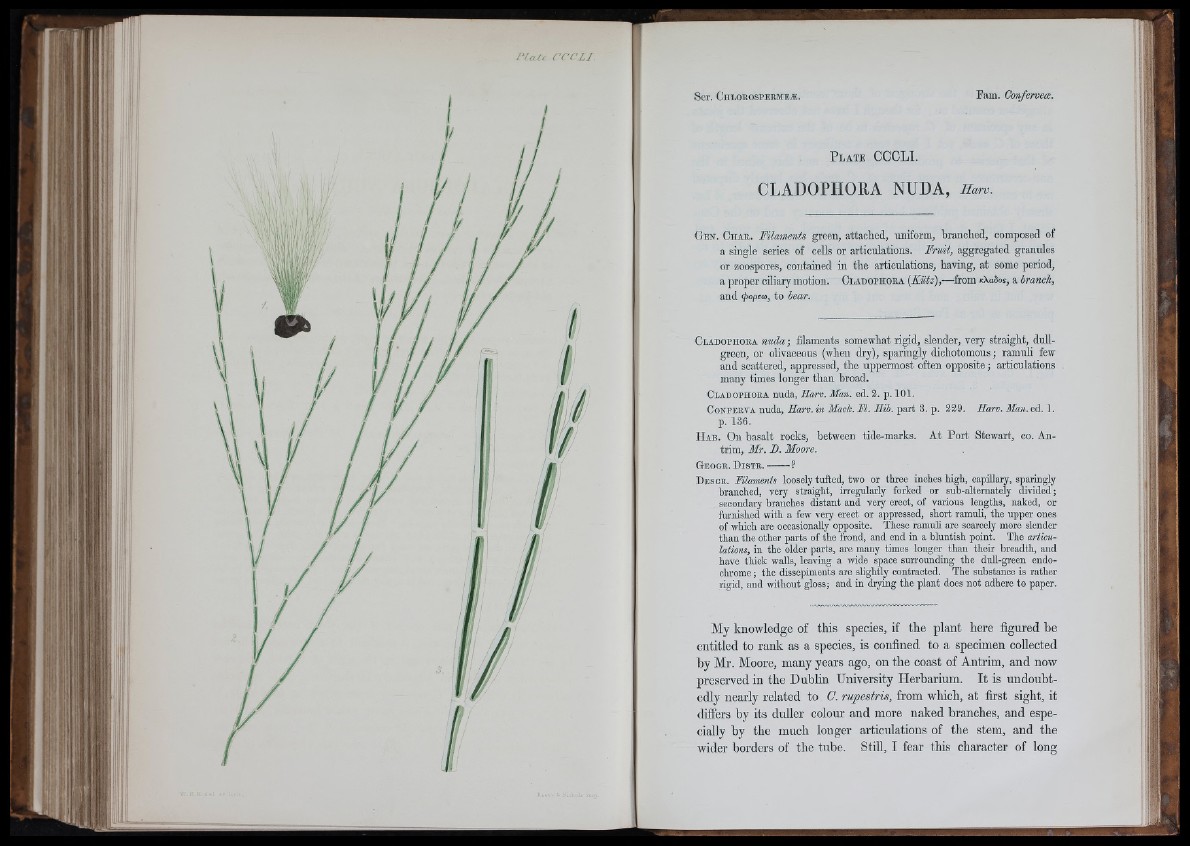
/ i
•il
l ;
S
P l a t , r C C L I .
i f
P l a t e CCCLI.
CLADOPHORA NUDA, H an .
G e n . C h a r . Filaments g r e en , a tta ch ed , u n ifo rm , b ran ch ed , com p o sed o f
a s in g le series o f c e lls or a r ticu la tio n s . F m it, a g g r e g a te d g ran u le s
o r zo o sp o r e s, co n ta in ed in th e a r ticu la tio n s, h a v in g , a t som e p eriod,
a p roper c ilia ry m o tio n . C la d o p h o r a [Kiitz),—from kXoSos, a hranch,
an d <j)opea, to bear.
C ladoph or a n u d a ; filaments somewhat rigid, slender, very straight, duU-
gieen, or olivaceous (when dry), sparingly dichotomous; ramuli few
and scattered, appressed, the uppermost often opposite; articulations
many times longer than broad.
C l a d o p h o r a nuda, H a n . Man. ed. 2. p. 101.
C o n f e r v a nuda, Harv. in Mack. FI. Hib. part 3 . p. 2 2 9 . Harv. Man. ed. 1.
p . 1 3 6 .
H a b . On basalt rocks, between tide-marks. At Port Stewart, co. Antrim,
Mr. B . .
G e o g r . D i s t r . ?
D esor. Filaments loosely tufted, two or three inches high, capillary,
branched, very straight, in-egularly forked or sub-altemately divided ;
secondary branches distant and very erect, of various lengths, naked, or
ftu-nished with a few very erect or appressed, short ramuli, the upper ones
of which are occasionally opposite. These ramuli are scarcely more slender
than the other parts of the frond, and end in a bluntish point. The articulations,
in the older parts, are many times longer than their breadth, and
have thick waUs, leaving a wide space surrounding the duU-green endochrome
; the dissepiments are slightly contracted. The substance is rather
rigid, and without gloss; and in drying the plant does not adhere to paper.
My knowledge of this species, if the plant here figured be
entitled to rank as a species, is confined to a specimen collected
by Mr. Moore, many years ago, on the coast of Antrim, and now
preserved in the Dublin University Herbarium. It is undoubtedly
nearly related to C. rupestris, from which, at first sight, it
differs by its duller colour and more naked branches, and especially
by the much longer articulations of the stem, and the
wider borders of the tube. Still, I fear this character of long
hi